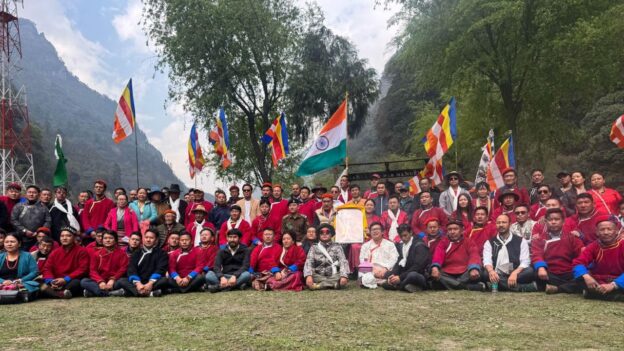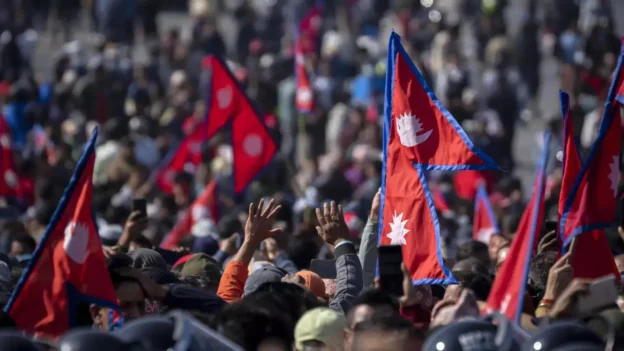Digitally Equipped, Digitally Vulnerable
Ravi Shankar Prasad argues that “The Digital India Programme (Digital Northeast vision 2022) is designed to transform India into a knowledge-based economy and a digitally empowered society by ensuring digital services, digital access, digital inclusion, digital empowerment and by bridging the digital divide.” Currently, some services are digitally available in the region, such as Common Service Centres (CSCs), e-District, e-transactions, State Data Centre (SDC), Digital Identity: Aadhar, and Digital Payments (BHIM), among others. These developments had their roots in the early initiation of ICT4D in 2000, with the central government placing Community Information Centers (CICS) at 446 Blocks of 7 Northeast borderlands and 40 blocks of Sikkim.
These developments are the result of many factors, and Myanmar’s international progress, especially with China in border trade, was one of them. Following the e-ASEAN trade agreements, Myanmar attempted to elevate trade liberalization in ICT products, services, and investments to support the e-ASEAN initiative. The early efforts to strengthen the use of ICT are incorporating the network infrastructure by the Department of Border Trade (DBT), which uses: the iPstar satellite and the optical fiber network connection. Except at Muse and Myawaddy, MDBT has installed the iPstar satellite network connection at all border checkpoints. The ASEAN agreement further pushes Myanmar to develop e-Payment, e-Banking, e-Customs, and e-Trading, which impact implementing ICT in trade logistics, extracting more opportunities for investments in new technologies. Technologies incorporated in trade logistics include transport, warehousing, cargo consolidation, border clearance, and country distribution and payment systems, which significantly improve logistics performance, reduce export and import lead time, and improve supply chain quality. Such competition for economic surplus pushes India to invest in ICTs in public and private sectors requiring these sectors to incorporate ICT at a higher degree in trade logistics.
Successful implementation of Digital Northeast vision would mean more digital data converging into the hands of the government. These developments will ensure indigenous people in Northeast borderlands massively moving online, notwithstanding that their everyday life offline is already socio-politically and economically conflicting. Further integration of the indigenous people online without lack of adequate knowledge of the various forms of impacts technology could have on them is incomprehensible. This calls for people’s awareness of technology use so that it does become an instrument that could potentially cause vulnerabilities.
People in the borderlands, as people elsewhere in India, are unaware that their electronic devices, such as mobile phones and computers, carry records of private information such as family photos, medical, banking, personal conversation, information concerning websites they visit, and much more. People engaged in more professional jobs have heightened priority in managing information confidentially. The penetration of digital platforms into the borderlands means exposure to online communication and online trade through social media platforms. This also creates the space for access to much of the citizens’ digital data interface for authorities. It is important to understand these developments in the backdrop of the Personal Data Protection Bill (PDP), which was introduced in the Parliament 2019 and withdrawn later on August 2022.
The PDP aims to regulate companies’ engagement with individual data inside India. To protect individuals’ digital privacy through law, the bill seeks to create a trustworthy relationship between persons and entities that process the data. Following the concept of data localization, the bill proposed a Data Protection Authority (DPA) to regulate social media companies and other organizations on how they use users’ data within the country. The bill categorizes data into critical, sensitive, and general. Sensitive data are to be stored in India. It includes financial, health, sexual orientation, biometrics, transgender status, religious or political beliefs, and affiliation. With explicit consent, these data can also be processed outside India.
Critical data includes information such as military or national security data. The third is a general category that contains the remaining data. The draft bill has been opposed by experts, ministers, Facebook, and Twitter, among others, arguing that the loopholes towards data infringement outweigh its effectiveness. Adding to the criticality of the bill, the government also utilizes data from digital platforms such as Common Service Centres (CSCs), e-District, e-transactions, State Data Centres (SDC), Digital Identity: Aadhar, and Digital Payments (BHIM), among others, for governance. This means that projects such as the Digital Northeast vision and PDP, with further revision, are complementary and cannot be understood without the other. Clinical assertion of these relations raises a few issues such as, the utility of the data collected through digital platforms and backed by proposed bills similar to the PDP and the impacts on the indigenous people in Northeast borderlands. The above mentioned issues do not cast any doubt on the government’s collection of data and datafication which is an inevitable form of governance and is practiced all over the world. What is important though is to develop a proper understanding of whether the change in forms of governance goes hand-in-hand with rights and laws that democratically and constitutionally favor the interest of the people.
From rights to digital rights for indigenous peoples
Union Electronics and Information Technology Minister Ashwini Vaishnav said that the PDP with new amendments would lead to a new “comprehensively legal framework.”
However, such a bill will be comprehensive only if separate provisions that recognize the digital rights of indigenous people are included which could be done by inclusively incorporating a bottom-up approach to ensure data privacy and protection to indigenous people in the borderlands. There are specific ways to do that. Firstly, it is crucial to make stringent digital rights for indigenous people in the borderlands.
Digital rights are the “realization of the values in the Constitution of India’s preamble- justice, equality, fraternity, and liberty- in our digital worlds today.”
Digital rights are not distinct from fundamental human rights. It is an extension of rights with dynamics in human and technological interaction. These rights must ensure that companies or organizations do not infringe on indigenous peoples’ privacy in specific geo-political spaces by selling their data to third parties in any way that could have an adverse impact on them. Data privacy and protection must ensure safeguards for indigenous people while promoting an environment for entrepreneurship and innovation in the region.
The other issue which needs to be highlighted are laws concerning Digital Northeast vision 2022. There must be well laid out qualifiers which protect the indigenous people in so far as collection of data and its objectives are concerned. Just as it is the duty of every democratic government to be accountable and transparent, in this case transparency can ensure a relationship of trust between the local and the government. Since Digital Northeast vision 2022 will proliferate market trade and commerce, there will be extensive cross-border digital communication, exchange, and trade through different online platforms.
The indigenous population need to be made aware of the overall impact of technology, both from companies and the government. To ensure their protection and as a way of upliftment, the government must ensure that people in the borderlands are equipped with quality education, knowledge and awareness to pursue their digital rights. In this context, what also assumes great significance is that the government must recognize that people in these regions may lack education but are playing a significant role in nation building and securitization.
To uplift is to ensure that the communities can decide their future or even in the democratic interpretation of their needs. Failure to ensure inclusive community-oriented rights and inclusivity of the indigenous communities in framing of laws will further complicate the borderlands in the future.
(The author is a doctoral candidate at the School of Information, University of Michigan-Ann Arbor. His area of interest is ICT4D, Science, technology, and society, HCI/HMI, and South and Southeast Asian Highlands.)







